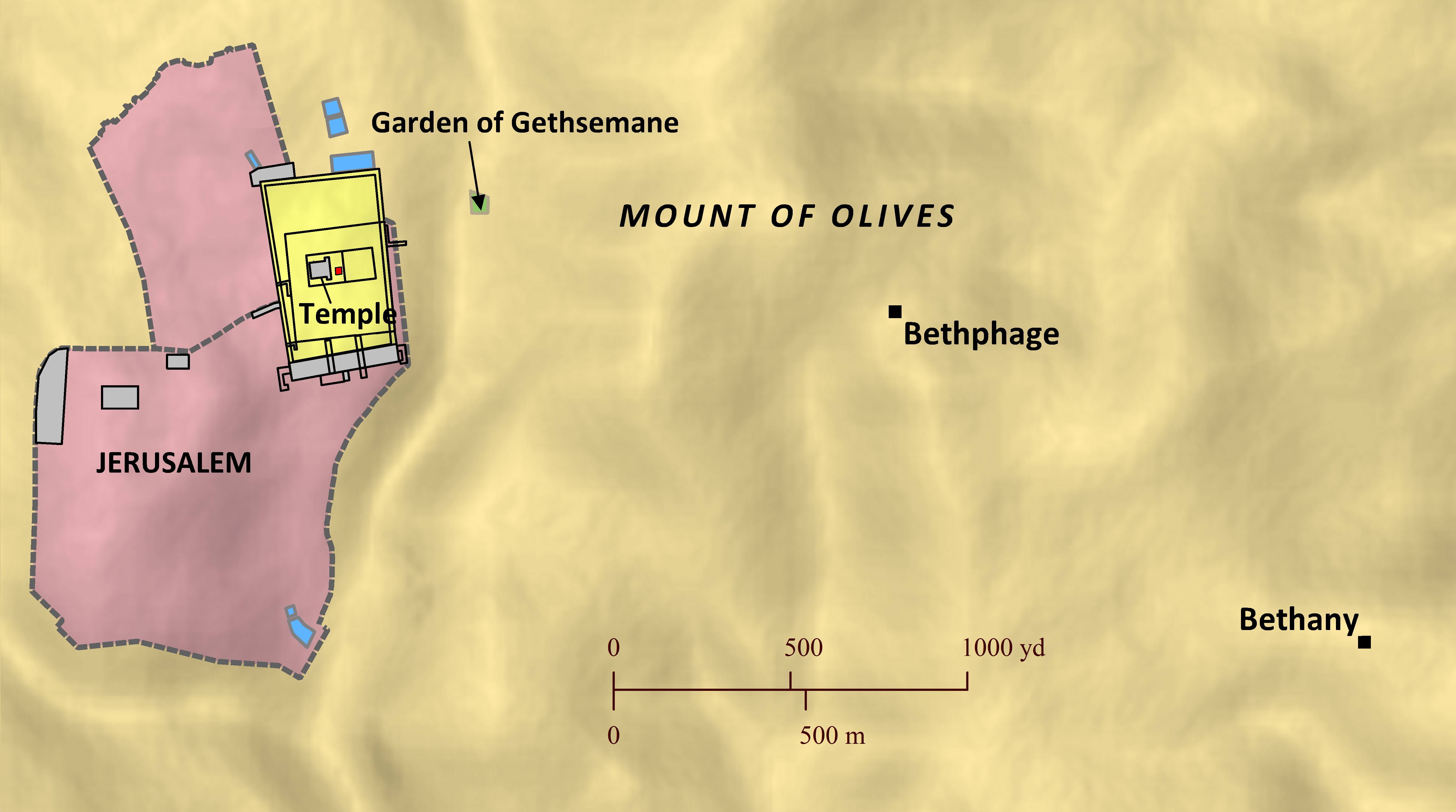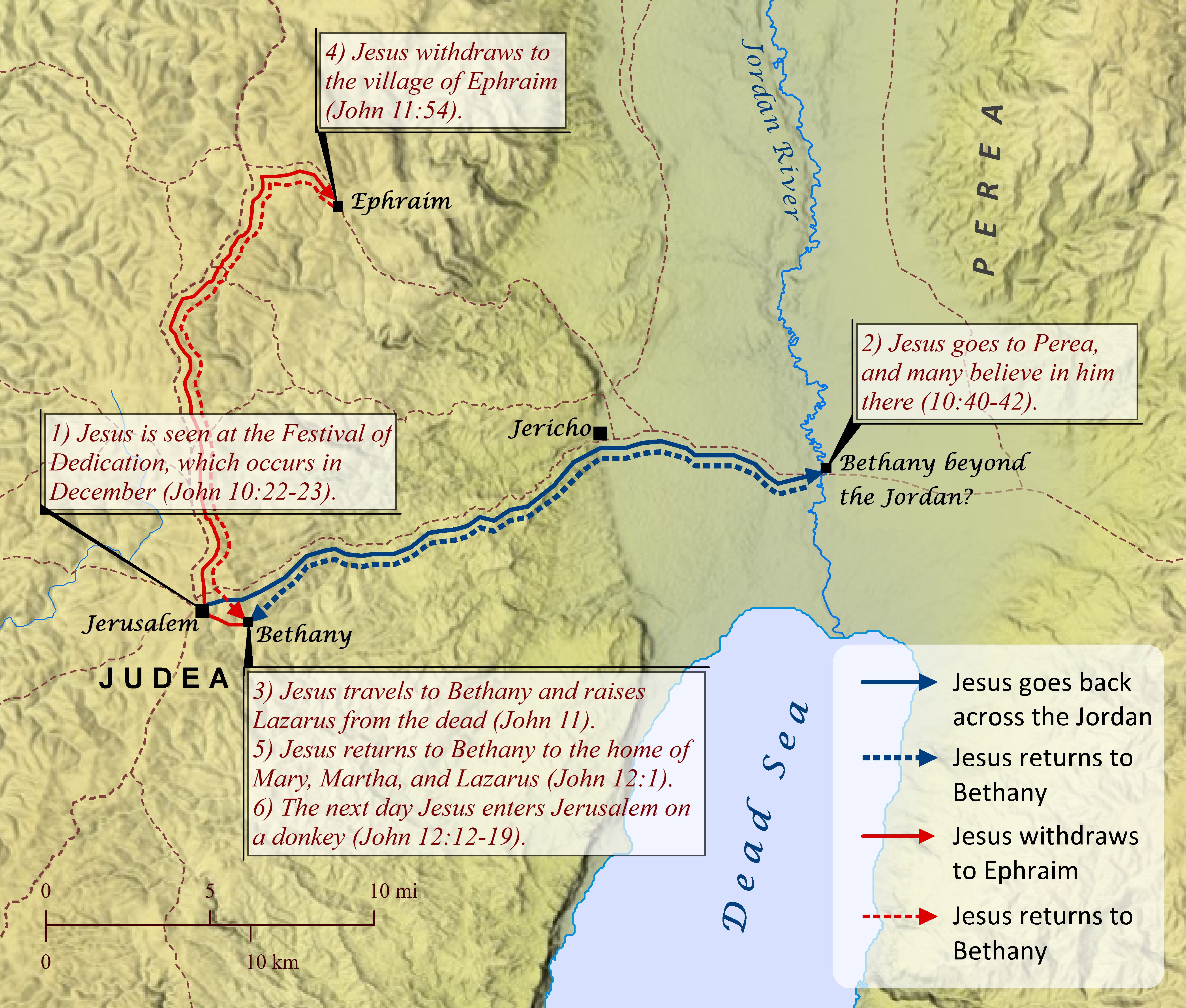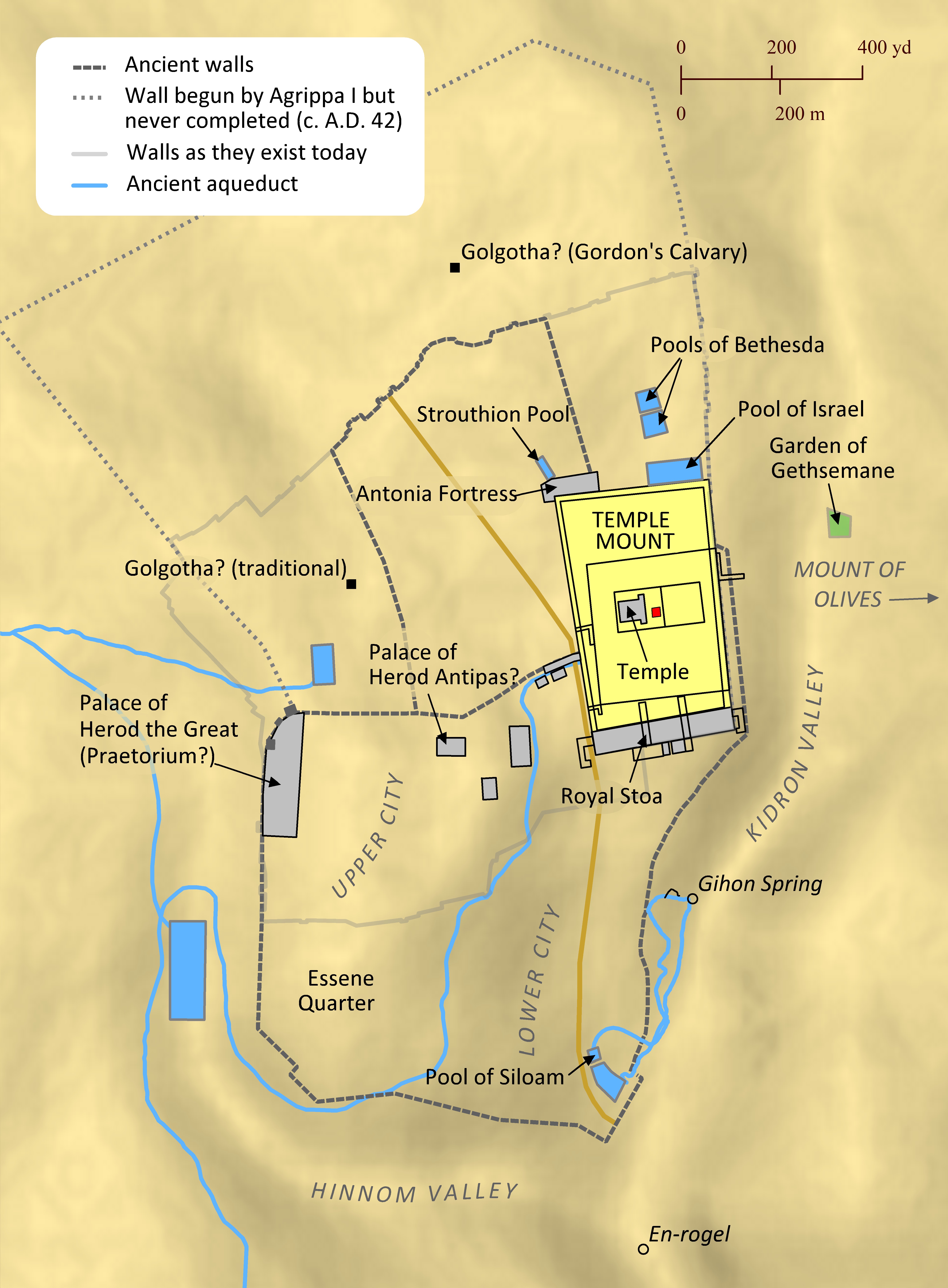Note: This view shows ‘verses’ which are not natural language units and hence sometimes only part of a sentence will be visible—click on any Bible version abbreviation down the left-hand side to see the verse in more of its context. Normally the OET discourages the reading of individual ‘verses’, but this view is only designed as a tool for doing comparisons of different translations—the older translations are further down the page (so you can read up from the bottom to trace the English translation history). The OET segments on this page are still very early looks into the unfinished texts of the Open English Translation of the Bible—please double-check these texts in advance before using in public.
AICNT On the next day, the large crowd that had come to the feast, when they heard that Jesus was coming to Jerusalem,
OEB On the following day great numbers of people who had come to the Festival, hearing that Jesus was on his way to Jerusalem, took palm branches,
WEBBE On the next day a great multitude had come to the feast. When they heard that Jesus was coming to Jerusalem,
WMBB On the next day a great multitude had come to the feast. When they heard that Yeshua was coming to Jerusalem,
NET The next day the large crowd that had come to the feast heard that Jesus was coming to Jerusalem.
LSV On the next day, a great multitude that came to the celebration, having heard that Jesus comes to Jerusalem,
FBV The following day the crowds of people who had come for the Passover festival heard that Jesus was on his way to Jerusalem.
TCNT On the next day, when [fn]a large crowd that had come to the feast heard that Jesus was coming to Jerusalem,
T4T The next day the huge crowd of people that had come to Jerusalem for the Passover celebration heard that Jesus was coming to Jerusalem.
LEB ¶ On the next day the large crowd who had come to the feast, when they[fn] heard that Jesus was coming to Jerusalem,
BBE The day after, a great number of people who were there for the feast, when they had the news that Jesus was coming to Jerusalem,
Moff Next day the great mass of people who had come up for the festival heard that Jesus was entering Jerusalem,
Wymth The next day a great crowd of those who had come to the Festival, hearing that Jesus was coming to Jerusalem,
ASV On the morrow a great multitude that had come to the feast, when they heard that Jesus was coming to Jerusalem,
DRA And on the next day, a great multitude that was to come to the festival day, when they had heard that Jesus was coming to Jerusalem,
YLT On the morrow, a great multitude that came to the feast, having heard that Jesus doth come to Jerusalem,
Drby On the morrow a great crowd who came to the feast, having heard that Jesus is coming into Jerusalem,
RV On the morrow a great multitude that had come to the feast, when they heard that Jesus was coming to Jerusalem,
(On the morrow a great multitude that had come to the feast, when they heard that Jesus was coming to Yerusalem, )
SLT The morrow a great crowd, having come to the festival, having heard that Jesus comes to Jerusalem,
Wbstr On the next day, many people that had come to the feast, when they heard that Jesus was coming to Jerusalem,
KJB-1769 ¶ On the next day much people that were come to the feast, when they heard that Jesus was coming to Jerusalem,
(¶ On the next day much people that were come to the feast, when they heard that Jesus was coming to Yerusalem, )
KJB-1611 ¶ On the next day, much people that were come to the feast, when they heard that Iesus was comming to Hierusalem,
(Modernised spelling is same as from KJB-1769 above, apart from punctuation)
Bshps On the next day, much people that were come to ye feast, when they hearde that Iesus should come to Hierusalem,
(On the next day, much people that were come to ye/you_all feast, when they heard that Yesus/Yeshua should come to Yerusalem,)
Gnva On the morowe a great multitude that were come to the feast, when they heard that Iesus should come to Hierusalem,
(On the morrow a great multitude that were come to the feast, when they heard that Yesus/Yeshua should come to Yerusalem, )
Cvdl Vpon the nexte daye moch people which were come vnto the feast, whan they herde that Iesus came towarde Ierusalem,
(Upon the next day much people which were come unto the feast, when they heard that Yesus/Yeshua came toward Yerusalem,)
TNT On the morowe moche people that were come to the feast when they hearde that Iesus shuld come to Ierusalem
(On the morrow much people that were come to the feast when they heard that Yesus/Yeshua should come to Yerusalem )
Wycl But on the morew a myche puple, that cam togidere to the feeste dai, whanne thei hadden herd, that Jhesus cam to Jerusalem,
(But on the morew a much people, that came together to the feast day, when they had heard, that Yhesus came to Yerusalem,)
Luth Des andern Tages, viel Volks, das aufs Fest kommen war, da es hörete, daß JEsus kommt gen Jerusalem,
(Des change day, many peoples, the onto Fest coming was, there it heard, that Yesus comes to/toward Yerusalem,)
ClVg In crastinum autem, turba multa quæ venerat ad diem festum, cum audissent quia venit Jesus Jerosolymam,[fn]
(In crastinum however, crowd fine which had_come to day festum, when/with audissent because he_came Yesus Yerosolymam, )
UGNT τῇ ἐπαύριον ὁ ὄχλος πολὺς, ὁ ἐλθὼν εἰς τὴν ἑορτήν, ἀκούσαντες ὅτι ἔρχεται ὁ Ἰησοῦς εἰς Ἱεροσόλυμα,
(taʸ epaurion ho oⱪlos polus, ho elthōn eis taʸn heortaʸn, akousantes hoti erⱪetai ho Yaʸsous eis Hierosoluma,)
SBL-GNT Τῇ ἐπαύριον ⸀ὁ ὄχλος πολὺς ὁ ἐλθὼν εἰς τὴν ἑορτήν, ἀκούσαντες ὅτι ἔρχεται ⸁ὁ Ἰησοῦς εἰς Ἱεροσόλυμα,
(Taʸ epaurion ⸀ho oⱪlos polus ho elthōn eis taʸn heortaʸn, akousantes hoti erⱪetai ⸁ho Yaʸsous eis Hierosoluma,)
RP-GNT Τῇ ἐπαύριον ὄχλος πολὺς ὁ ἐλθὼν εἰς τὴν ἑορτήν, ἀκούσαντες ὅτι ἔρχεται Ἰησοῦς εἰς Ἱεροσόλυμα,
(Taʸ epaurion oⱪlos polus ho elthōn eis taʸn heortaʸn, akousantes hoti erⱪetai Yaʸsous eis Hierosoluma,)
TC-GNT Τῇ ἐπαύριον [fn]ὄχλος πολὺς ὁ ἐλθὼν εἰς τὴν ἑορτήν, ἀκούσαντες ὅτι ἔρχεται [fn]Ἰησοῦς εἰς Ἱεροσόλυμα,
(Taʸ epaurion oⱪlos polus ho elthōn eis taʸn heortaʸn, akousantes hoti erⱪetai Yaʸsous eis Hierosoluma, )
Key for above GNTs: yellow:punctuation differs, red:words differ (from our SR-GNT base).
BMM BibleMapper.com Maps:

Bethany and Bethphage
Matthew 21:1-17; Mark 11:1-11; Luke 19:28-48; John 12:1-19; see also Matthew 26:6-13; Mark 14:3-9
At the start of Passover one week before he was crucified, Jesus and his disciples traveled to Jerusalem, approaching the city from the east. When they arrived at the village of Bethphage, Jesus mounted a donkey and rode down the Mount of Olives as a humble king entering his capital city. Along the way, many people laid branches and cloaks in his path to welcome him. After Jesus entered the city, he immediately went up to the Temple and drove out the moneychangers and merchants there, and he healed the blind and the lame. Then he traveled nearly two miles outside the city to the village of Bethany to spend the night, which appears to have been where he typically lodged each night while visiting Jerusalem during the crowded Passover festival. Bethany is also where Jesus’ close friends Mary, Martha, and Lazarus lived. One evening while Jesus was there at a large dinner party given in his honor, Martha served the food, and Mary poured expensive perfume on Jesus’ feet and wiped his feet with her hair.

Jesus’ Final Journey to Jerusalem
Much like the difficulties of discerning the Israelites’ journey to the Promised Land (see here), the task of reconciling the four Gospel accounts of Jesus’ final journey to Jerusalem into one coherent itinerary has proven very challenging for Bible scholars. As with many other events during Jesus’ ministry, the accounts of Matthew, Mark, and Luke (often referred to as the Synoptic Gospels) present a noticeably similar account of Jesus’ final travels, while John’s Gospel presents an itinerary that is markedly different from the others. In general, the Synoptic Gospels present Jesus as making a single journey to Jerusalem, beginning in Capernaum (Luke 9:51), passing through Perea (Matthew 19:1-2; Mark 10:1) and Jericho (Matthew 20:29-34; Mark 10:46-52; Luke 18:35-19:10), and ending at Bethany and Bethphage, where he enters Jerusalem riding on a donkey (Matthew 21:1-11; Mark 11:1-11; Luke 19:28-44). John, on the other hand, mentions several trips to Jerusalem by Jesus (John 2:13-17; 5:1-15; 7:1-13; 10:22-23), followed by a trip to Perea across the Jordan River (John 10:40-42), a return to Bethany where he raises Lazarus from the dead (John 11), a withdrawal to the village of Ephraim for a few months (John 11:54), and a return trip to Bethany, where he then enters Jerusalem riding on a donkey (John 12:1-19). The differences between the Synoptics’ and John’s accounts are noteworthy, but they are not irreconcilable. The Synoptics, after noting that Jesus began his trip at Capernaum, likely condensed their accounts (as occurs elsewhere in the Gospels) to omit Jesus’ initial arrival in Jerusalem and appearance at the Festival of Dedication, thus picking up with Jesus in Perea (stage 2 of John’s itinerary). Then all the Gospels recount Jesus’ trip (back) to Bethany and Jerusalem, passing through Jericho along the way. Likewise, the Synoptics must have simply omitted the few months Jesus spent in Ephraim to escape the Jewish leaders (stage 4 of John’s itinerary) and rejoined John’s account where Jesus is preparing to enter Jerusalem on a donkey.

Jerusalem during the New Testament
By the time of the New Testament, the ancient city of Jerusalem had been transformed from the relatively small fortress of David’s day (2 Samuel 5:6-10; 1 Chronicles 11:4-9) into a major city with a Temple that rivaled the greatest temples in the Roman world. Just prior to Jesus’ birth, Herod the Great completely renovated and expanded the Temple of the Lord, and he also built a lavish palace for himself, various pools (where Jesus occasionally performed healings), public buildings, and military citadels, including the Antonia Fortress, which overlooked the Temple. Wealthy residents, including the high priest, occupied extravagant houses in the Upper City, while the poorer residents were relegated to less desirable areas like the Lower City. The Essene Quarter was so named because many of its residents belonged to the Essenes, a strict religious sect that was known for its careful attention to the law of Moses. Across the Kidron Valley lay the Garden of Gethsemane, where Jesus often met with his disciples (Matthew 26:36-46; Mark 14:32-53; John 18:1-14). Further east was the Mount of Olives, where Jesus began his triumphal entry one week before his crucifixion (Matthew 21:1-11; Mark 11:1-11; Luke 19:28-40; John 12:12-19), taught his disciples about the last days (Matthew 24-25; Mark 13), and eventually ascended to heaven after his resurrection (Luke 24:50-53; Acts 1:1-11).


